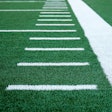Little League International has expanded its moratorium on the use of composite bats to all of its baseball divisions - including the Majors division for boys and girls ages 9 to 12. Originally announced in December, the moratorium disallows the use of all baseball bats constructed with composite material in the barrel unless a specific model shows in laboratory testing that, after the bat is broken in, it will not exceed the Batted Ball Coefficient of Restitution (BBCOR) performance standard printed on the bat.
The Williamsport, Pa.-based organization's move follows that of the National Federation of State High School Associations, which outlawed composite bats - constructed with the same aluminum exterior as standard aluminum bats, but with a woven graphite wall on the interior - for the 2010-11 season.
This week, Little League posted on its website a series of frequently asked questions, as well as updated information on the composite bats that have received waivers for all of its baseball divisions. (Little League's softball divisions are not affected by this moratorium.) Individual bat models are tested at an independent laboratory, and the results are conveyed to the manufacturer. If the manufacturer provides results to Little League - and the bat passes the testing - it will be noted on those lists, according to the organization.
"The moratorium is not the result of Little League changing its bat standards, nor was it influenced by any relationships with bat manufacturers," Patrick W. Wilson, vice president of operations at Little League International, says. "The decision to place the moratorium on composite bats in Little League's baseball divisions is based solely on the fact that scientific research showed that composite-barreled bats may exceed the performance standard that is printed on the bats, after the bats had been broken in."
According to the league: "Wooden and aluminum metal/alloy bats are not subject to the moratorium. Bats that have only a metal or alloy barrel (and no other material, unless it is in the end cap of the bat), and if it meets the other standards (length, diameter, etc. for the respective division in which it is used) are not subject to the moratorium, regardless of the composition of the handle or the transition to the barrel."
Some composite bats can be tampered with in the manufacturing process, most commonly through "rolling," in which a machine uses rollers to apply pressure to the bat, breaking down the composite fibers and resinous glues that manufacturers use. This causes the fibers to expand and create a trampoline effect, projecting the ball farther and faster. "Rolling the bat gives it a higher performance," says Elliot Hopkins, director of educational services for the NFHS and the federation's liaison to the Baseball Rules Committee. "It can significantly increase the performance."
Even composite bats that are not altered will eventually see a performance increase after normal use, Hopkins says.




































